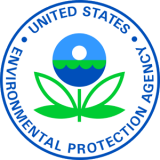EPA Selects the University of Missouri-Columbia for Funding to Support Food Waste Reduction through Anaerobic Digestion
Environmental News
FOR IMMEDIATE RELEASE

The University of Missouri-Columbia project seeks to increase the use of AD for organic waste treatment and promote operational innovations for digestate management. The university team will establish partnership programs and trainings for farmers, schools, AD companies, and governments.
EPA selected 12 AD projects nationwide to receive a total of $3 million in funding. EPA anticipates that it will make these awards once all legal and administrative requirements are satisfied.
“Finding solutions to better curb food waste continues to be a top priority for the Trump administration,” said EPA Administrator Andrew Wheeler. “This year’s round of innovative community projects is focusing on ways to reduce food waste at the local and state levels and divert it from landfills.”
This anaerobic digestion funding opportunity is part of EPA’s efforts and contributions to the Winning on Reducing Food Waste Initiative, a partnership among EPA, U.S. Department of Agriculture, and Food and Drug Administration to reduce food loss and waste through individual and combined federal action.
“The University of Missouri and EPA have a long history of collaboration in environmental engineering and research in the Midwest. This research project extends our efforts to reduce food loss in our communities,” said EPA Region 7 Administrator Jim Gulliford.
The MU project will be led by Dr. Zhiqiang Hu from the University’s Civil and Environmental Engineering Department.
"Anaerobic digestion (AD) could be one of the sustainable solutions for food waste management and agricultural operations. Researchers at the University of Missouri are dedicated to AD research and innovation in the Midwest for improving agriculture and the environment," Dr. Hu said.
Anaerobic digestion is a process where microorganisms break down organic materials, such as food scraps, manure and sewage sludge, all in the absence of oxygen. Anaerobic digestion produces biogas, which can be captured and used for energy production, and “digestate,” a nutrient-rich product, such as a fertilizer.
AD is a strategy included in EPA’s food recovery hierarchy that is preferable to landfilling/incineration because it reclaims valuable resources. Keeping food waste from landfills, such as transforming it into fuel or fertilizer, can save money and reduce environmental impacts.
Background:
In 2019, EPA awarded a total of more than $110,000 in targeted cooperative agreements to the city of Madison, Wisconsin; Vermont Department of Environmental Conservation; and Washington State University’s Energy Program for expanding anaerobic digester capacity. Plans from these recipients include holding workshops promoting anaerobic digestion projects, providing subawards, and assistance opportunities for anaerobic digestion projects focusing on the food and beverage business sector.
For more information on anaerobic digestion, please visit EPA’s website.
To learn about other EPA resources and possible funding opportunities related to the food system, please visit EPA’s website.
Dr. Zhiqiang Hu, Professor, P.E., Civil and Environmental Engineering, University of Missouri-Columbia

-
PhD from the University of Connecticut
- MS from the University of Connecticut
- BS from Zhejiang University
Technical Focus - Biological nutrient removal, emerging renewable energy, biochemical/physicochemical treatment processes
Publications - Google Scholars
-
Wastewater treatment and biological nutrient removal
- Environmental nanotechnology, bioelectrochemistry and biosensors
- Bacterial adhesion, biofilm formation, and biofilm processes
- Integrated biochemical and physicochemical treatment systems
- Biomass and emerging renewable energy issues
- Bioreactor landfills
- Process modeling of suspended and attached growth systems
# # #
Learn more about EPA Region 7
View all Region 7 news releases
Connect with EPA Region 7 on Facebook: www.facebook.com/eparegion7
Follow us on Twitter: @EPARegion7
